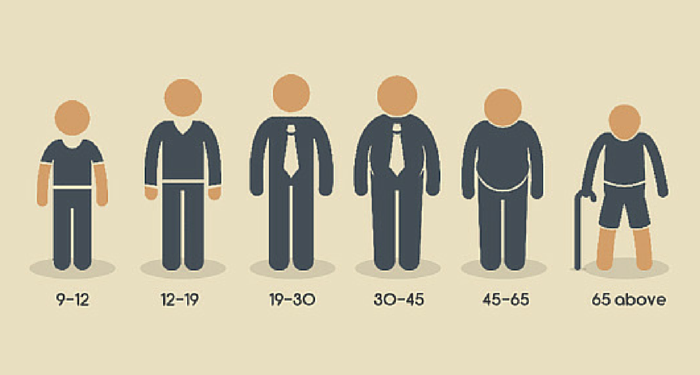Finding the Connection: How a Brand Name Can Help Tie Your Brand Together
Congratulations, you’re a parent! Bringing to life a pristine new entity created from scratch, it’s your brand. And like all things birthed into magnificence and destined to prosper, it needs a name.
Unfortunately, what you might be coming to realize is there’s no baby book to scour or great-grandparent to take after when shaping the signature alias of your newborn brand. The world is at your fingertips, and you might just want to coin a term that is cool and memorable. But when namer’s block kicks in and you are staring at a trash can full of crumpled papers of fizzled ideas, it’s probably because you’re brainstorming too broadly.
your fingertips, and you might just want to coin a term that is cool and memorable. But when namer’s block kicks in and you are staring at a trash can full of crumpled papers of fizzled ideas, it’s probably because you’re brainstorming too broadly.
There’s a seemingly infinite and daunting list of combinations in lettering and verbiage to craft your brands name if you wander into the process unintentionally. The alphabet is long and the dictionary is thick - you’ll be doodling for decades if your only filtering criterion is sounding “cool”. Your jump-off point needs be refined and specific, and it can start with your brand attributes.
Sounds redundant right? Use qualities of something to name it - how original! But, hear me out.
The mere fact that brand names can (and often do) have some connection back to the product, service or organization they represent is often unknown to their audiences. For instance, Aldi derives from the German word for discount. Durex was made to be a mashup between “durable, reliable, excellence”. Nike was the name of the Greek goddess of victory. These brand attributes were transformed into the names that the audience knows and loves.
These connections, however indirect, are a powerful example of branding. At the surface, a brand name is the biggest single brand representation out there, often living as the first impression and the aspect that is most likely to ingrain itself in the memory of the consumer. Because of this, any additional tie back to your product that can be evoked from the name provides an additional boost to the brand equity, in such that if the name becomes commonplace on the market, the connection will become more obvious, boosting the ease of memory for your brand.
 Additionally, creating a name with a connection shows a sense of purpose in your brand development. Respect is given to brands who are seen as well-thought-out and deliberate, as opposed to brands that come out of nowhere and look to have little background work given before hitting the market. If you can show that your brand name went through an extensive process and was developed by experts within the branding space, it shows the audience the importance given to the brand. They will then feel more confident connection the quality of the brand work with the quality of the overall brand product or organization.
Additionally, creating a name with a connection shows a sense of purpose in your brand development. Respect is given to brands who are seen as well-thought-out and deliberate, as opposed to brands that come out of nowhere and look to have little background work given before hitting the market. If you can show that your brand name went through an extensive process and was developed by experts within the branding space, it shows the audience the importance given to the brand. They will then feel more confident connection the quality of the brand work with the quality of the overall brand product or organization.
It is likely that customers will be oblivious to your uniquely crafted backstory, and that is okay. You will join the club of countless brands whose name and logos have narratives that people will never read. But the end result will be a unique sound and a better understanding of all that makes your newborn so special. Welcome to the world!
Image Sources:
Image 1
Image 2
The Appearance of Assortment: Why Kraft-Heinz Cross-Branded
“People achieve more as a result of working with others than against them.” -Dr. Allan Fromme
Facing a highly competitive packaged food industry and a shift in demands and drop in growth, Kraft-Heinz decided to take an offbeat-path to win consumers back. In a series of collaborative efforts with other brands, Kraft-Heinz has been able to achieve the appearance of more premium and diverse products. As the food community changes, Kraft-Heinz is changing with it.
The recent surge in the demand for products appearing natural, protein rich, or sugar free has no doubt affected the processed and packaged food aisles of your grocery store. The mounting distrust of big food companies led to a stagnant 2015 for Kraft-Heinz. But, in 2016, a new Mac ‘n Cheese product and healthy lunchable-style sandwich pack gave Kraft-Heinz’s brand the pick-me-up it needed.
Kraft Mac ‘n Cheese was a product losing momentum and credibility as consumers started looking suspiciously at the product once viewed as a “convenient dinner option.” After collaborating with Cracker Barrel, Kraft-Heinz released a new line of Mac ’n Cheese made with premium “Cracker Barrel award winning cheese”.
The tag line title made to say “you may not have liked our old cheese, but check out this shiny new cheese, it has won cheese awards!” By isolating an element of their product, and substituting it with the same element from another reputable brand, Kraft Mac ‘n Cheese looks a little less scary in the eyes of the consumer.
But not all cross branding efforts necessarily have to be the collaboration of a “better” or more premium version of a product to make it seem improved. Kraft-Heinz’s release of the “P3”packs, a protein packed twist on the traditional Lunchables feature packaging, which boldly advertises both the Oscar Meyer and Planters brands, is an example of a new branded product that is an equal collaboration. Although neither brand is any more or less reputable than the Kraft brand, the diversity created by using the equity of two brands gives the appearance of a superior product.
Variegating its products with similar or better brands makes Kraft-Heinz look more appealing in the less popular packaged food aisle, even if they’re collaborating with other packaged food. Two seems to be consistently better than one in the eyes of an untrusting consumer. Kraft Heinz’s 0.2 percent increase in U.S. sales to $4.7 billion from the first-quarter since the release of the “P3” packs to back up this phenomenon, after 2 years of declining sales. Tying in another brand freed Kraft-Heinz from a potentially dangerous product rut.
But why is that? Do buyers feel as if brands put more effort into products born from a multi-branded collaboration? Do we view a combination of brands who lack efficacy working together makes them more accountable?
Whether the new products are truly leaps and bounds improved is still up for discussion, but this was no doubt beneficial to the Kraft-Heinz brand. In a recent Trib Article author Alex Nixon adds that Kraft- Heinz’s new products” have been anything but revolutionary, but small changes can make a big difference with consumer”. If anything, it shows an implementation of strategy in creation of new product, and a targeted response to the consumer demands. Kraft-Heinz’s cross branding strategies show they’re listening, and they still care about being in the game
Next time your eyes linger on a cross branded product, allow yourself to wonder what is getting better by the collaboration of others. Let me know what you find.
Image Sources:
Image 1
Image 2
Learn more about building your best brand by downloading this FREE webinar, "Identifying The Opportunities In Your Brand Portfolio - Are You Capitalizing On Every Potential Business Opportunity Your Portfolio Provides?"
Speaking Their Language: 4 Tips in Branding for an Age Group
If a company’s message falls down in the forest with no one to hear it, did it really even make a sound?
Just like the lonely tree tipping, a brand irrelevant to its audience’s age group is non-existent. Creating a desirable brand means creating an observable one, and sometimes that means translating your message to match the desires of those you want to buy in.
The major rifts in the mindsets between age groups make this translation a necessity. A 10-year-old and a 40-year-old might both want Sharpies, but the 10-year-old will draw dragons in art class, and the 40-year old will label his Tupperware. To prevent your business’ generation gap from showing, here are four tips to guide branding for your target age group.
- Find the listeners, and those you wish were.
Know the ages of those following your company’s story and responding to your brand messaging. The scope of people you’re actually reaching shows how much work you’re going to have to do. Use customer analytics to see what ages have their eye on your business, and then decide if you want to focus in on a group of them. Know the reason a target group might want what you’re selling, and why they’re different from who’s currently buying. Once you find out what matters to them, you can show why your brand matters too. - Use what you’ve got going for you.
Hey, it’s worked so far right? You don’t have to reinvent the wheel on your brand in order to reach a specific age group; you just have to repackage it. Take what you have and put a new spin on why it's necessary to your demographic. Use the benefits you already know your brand has to offer and create specific connections in the reasons those benefits resonate with your target market. Estee Lauder was long known as a cosmetic brand for women 40-60 years old before they made Kardashian family member Kendall Jenner an official spokes-model. The brand instantly became teen friendly, without changing or adding a single product. You won’t hear this often in the business world, but find the “Kardashian” your brand needs. - Make less, more.
Make reaching the smaller sample group better than reaching the masses by presenting your brand more efficiently. Get specific, and tailor your message in a way that couldn’t be done for a catch–all group to make possible losses worth it. The criteria that motivates customers to buy ranges far and wide between ages. Once your ages get specific, the analysis of the criteria that matters to the desired age group will be more relevant and your tactics will be more successful. Sometimes effective brand strategy means making some cuts in the people groups you care about reaching. What good is a big audience if your message is not relevant or made specifically for anyone in it? - Don’t forget the other stuff.
Have you ever heard the phrase “age is just a number?” No brand can rely on one key component of a consumer’s identity to define all of their behavior. Tune in and target age groups you want to reach but leverage your strategies with the importance of other key demographics. Gender, race, socio-economic status, lifestyle and location can all make or break whether your message will be received.
Don’t let the appeal of your brand suffer due to information ill-communicated between ages. Once your brand finds its own crafted voice that speaks right into its targets ear, it will flourish stronger than yelling at the whole world. Make your sound count, just in case your company’s message ever falls down in a forest.
Learn more about building your best brand by downloading this FREE webinar, "Identifying The Opportunities In Your Brand Portfolio - Are You Capitalizing On Every Potential Business Opportunity Your Portfolio Provides?"


